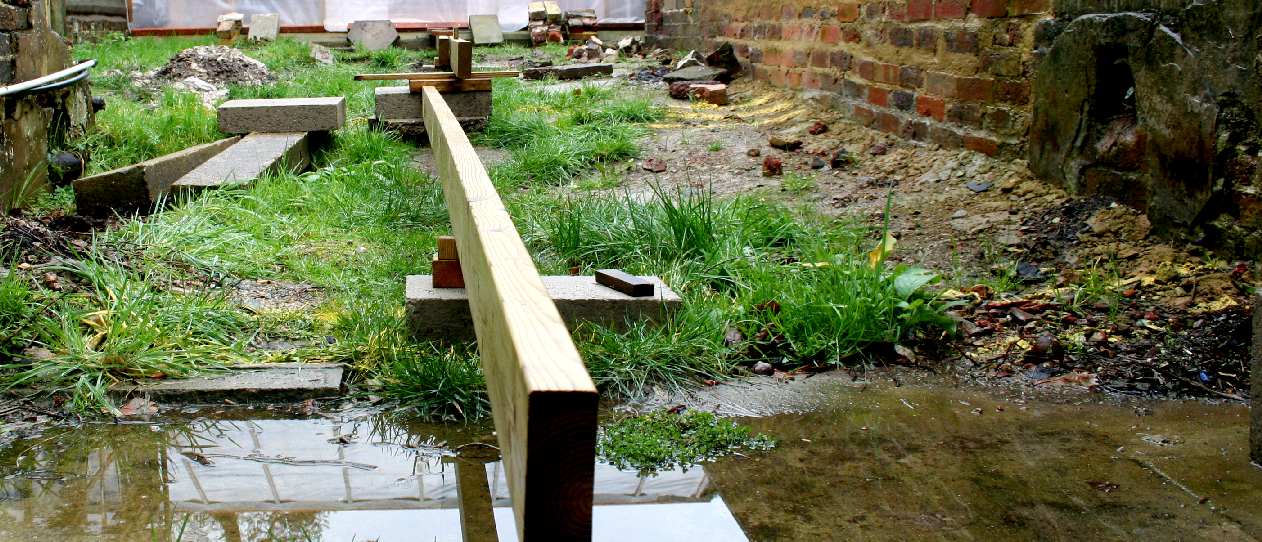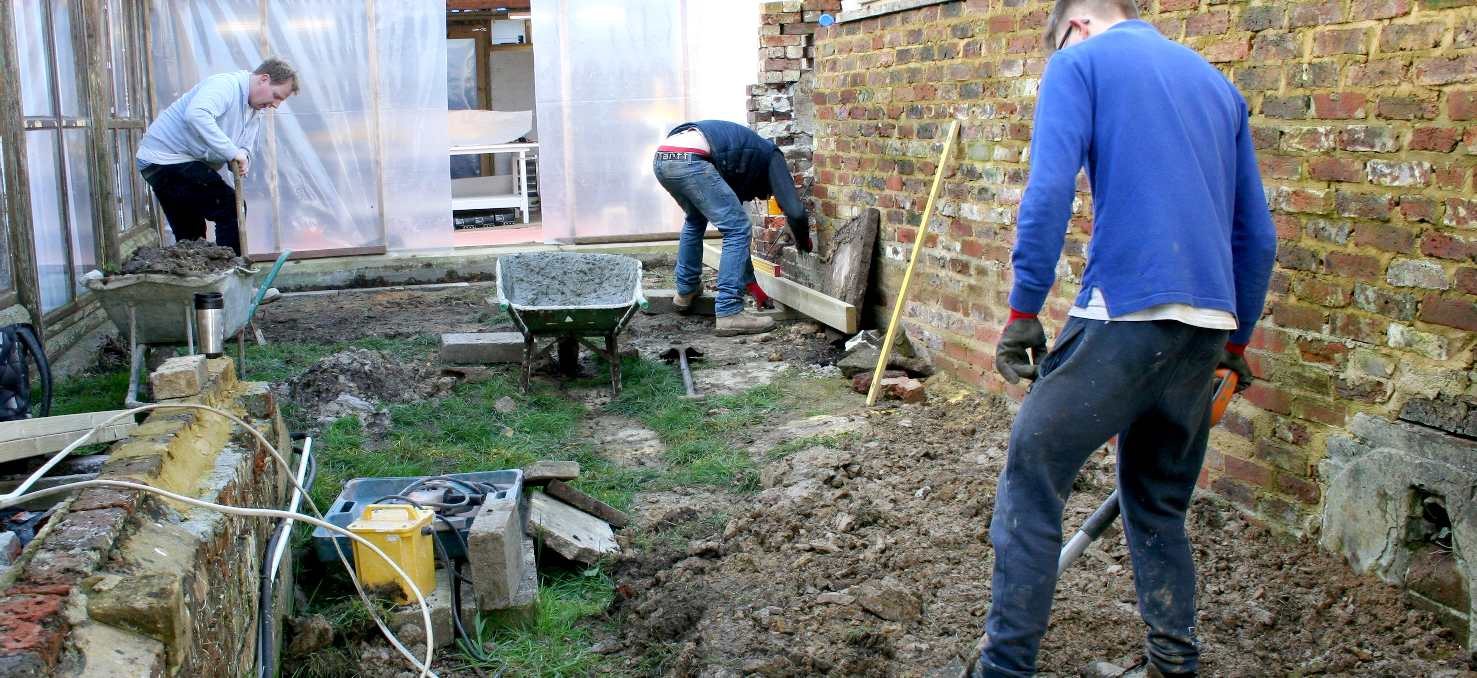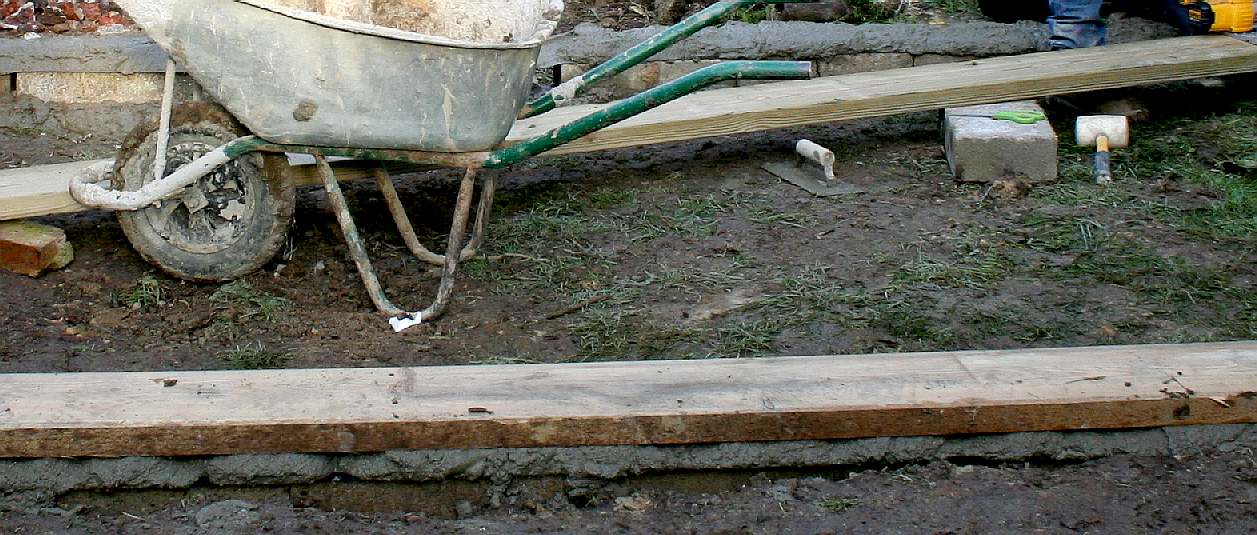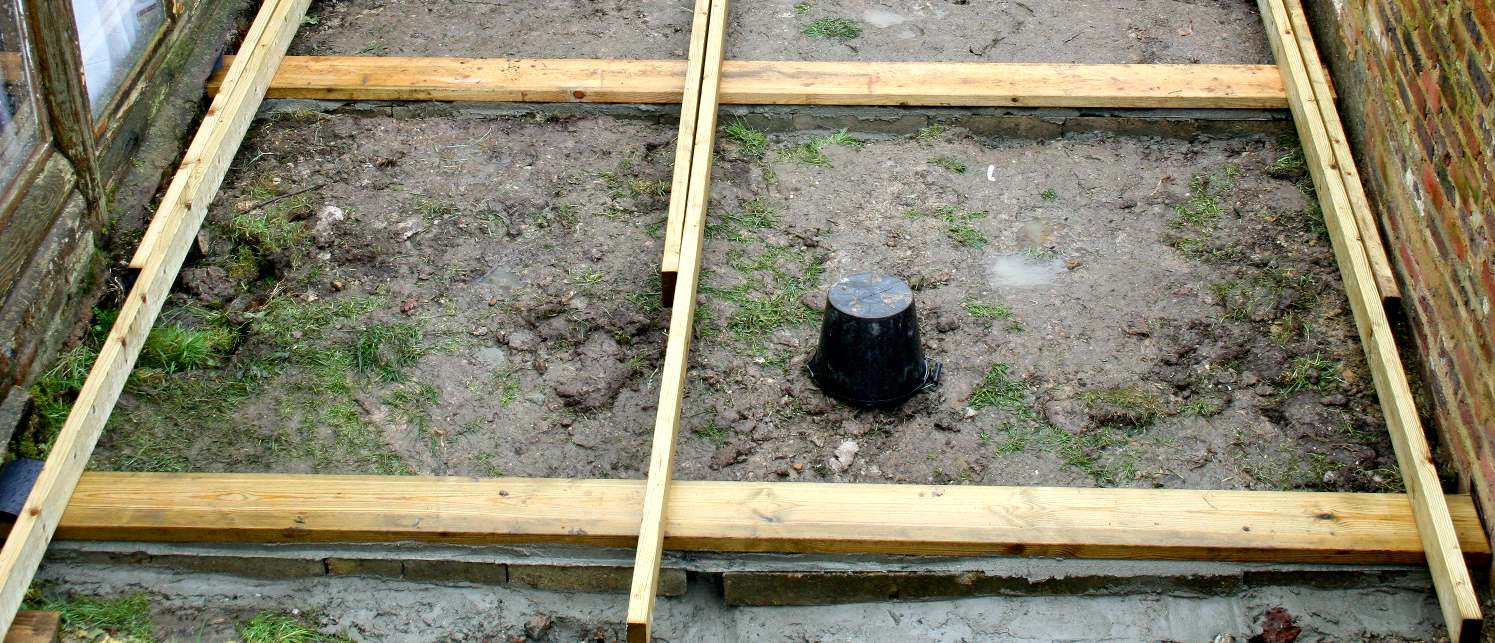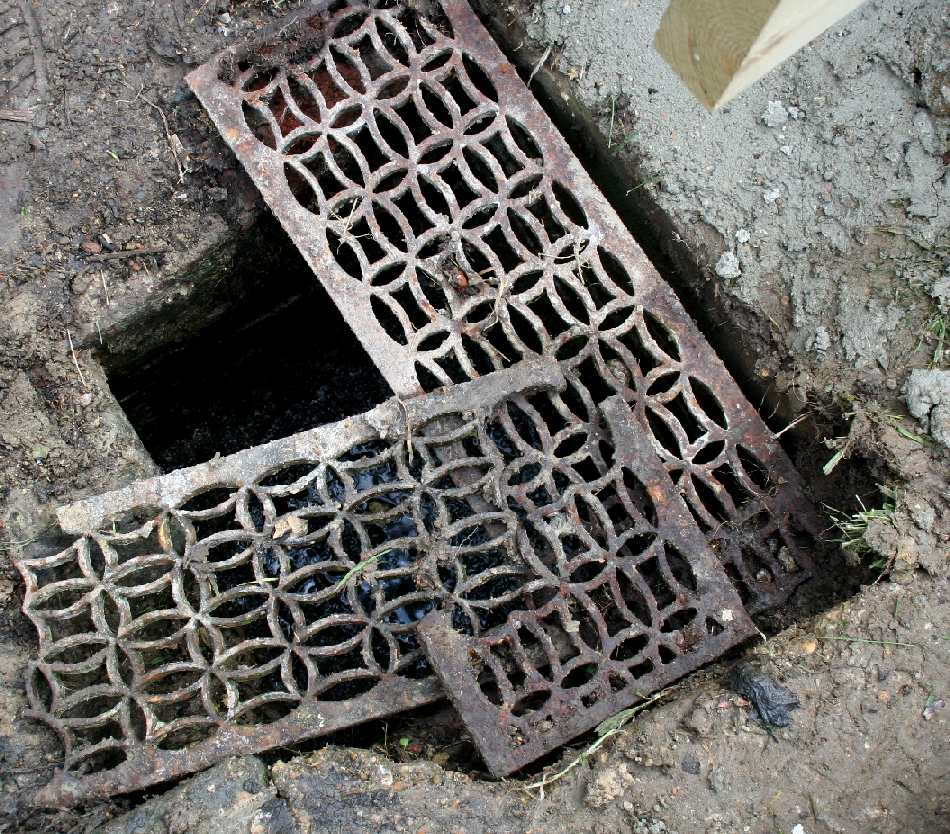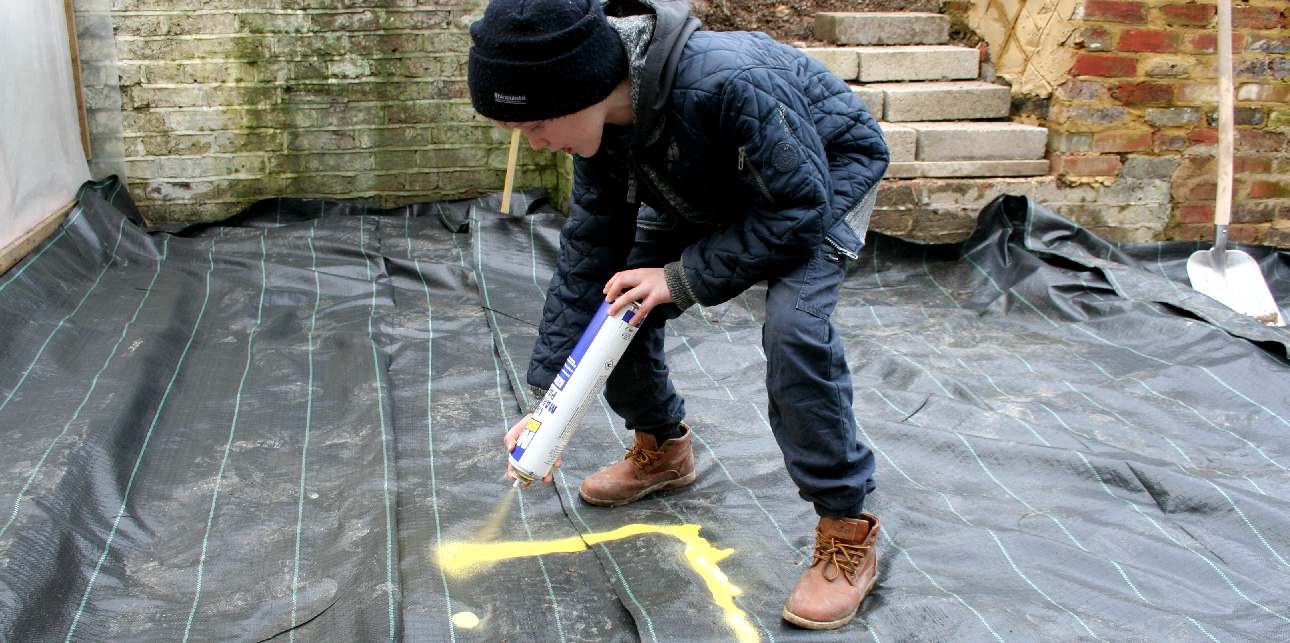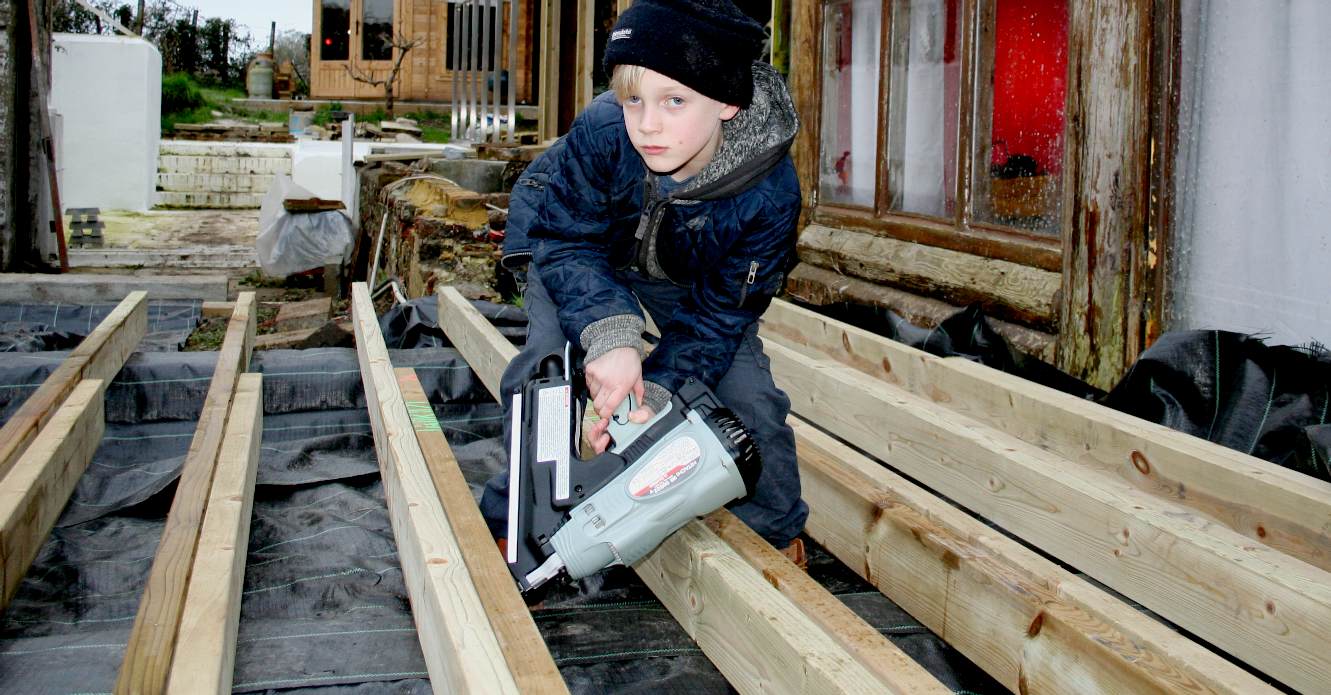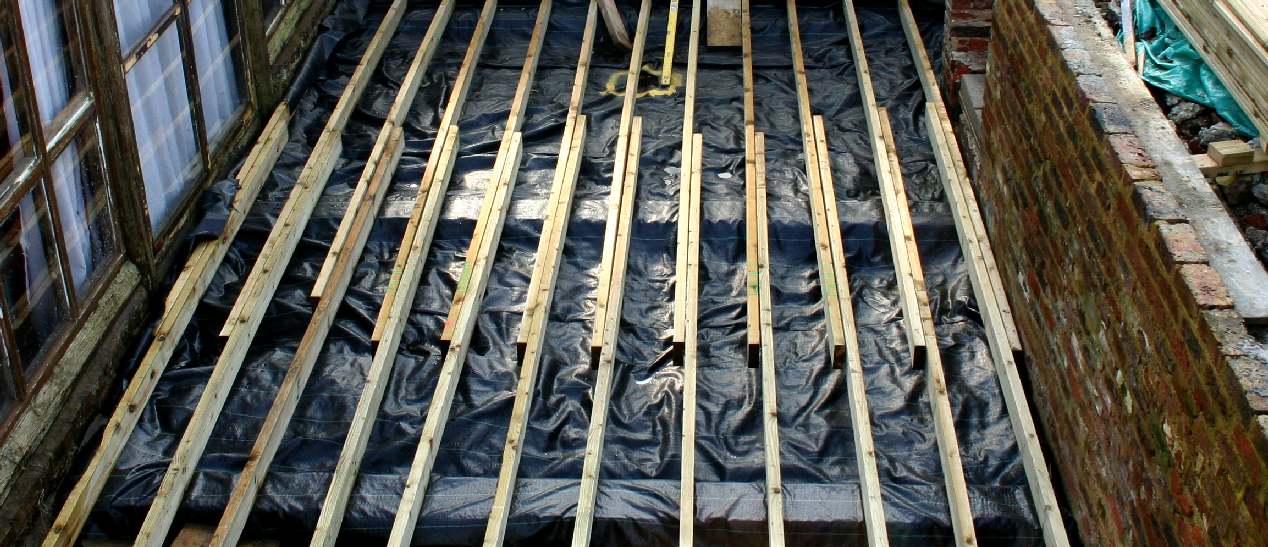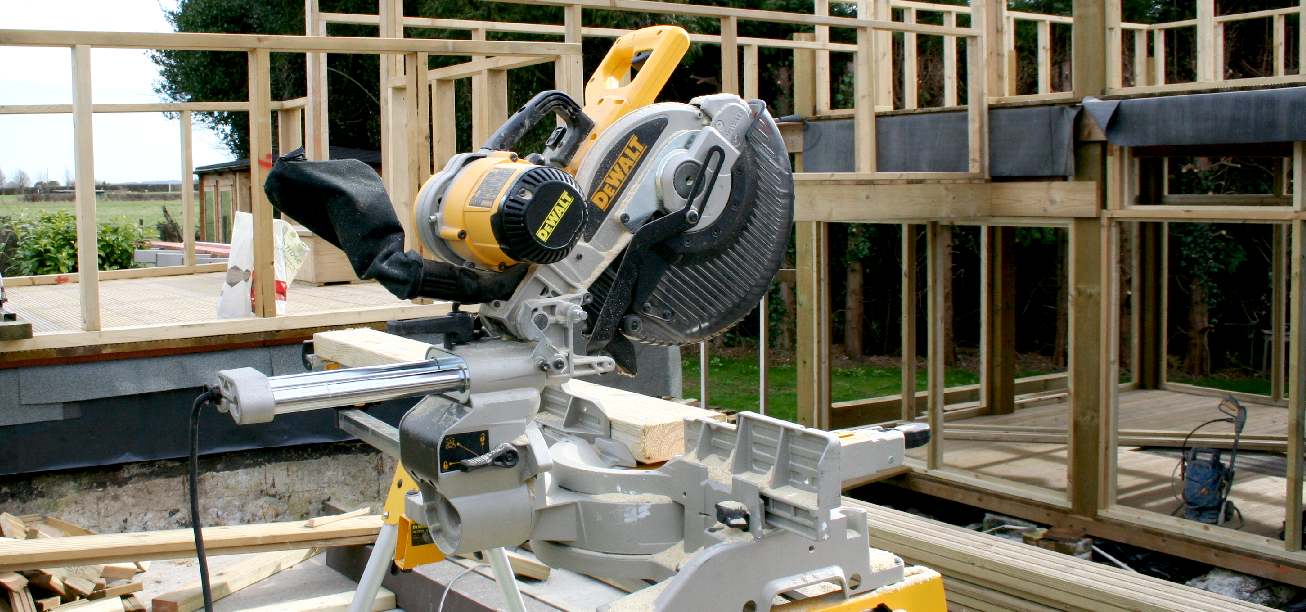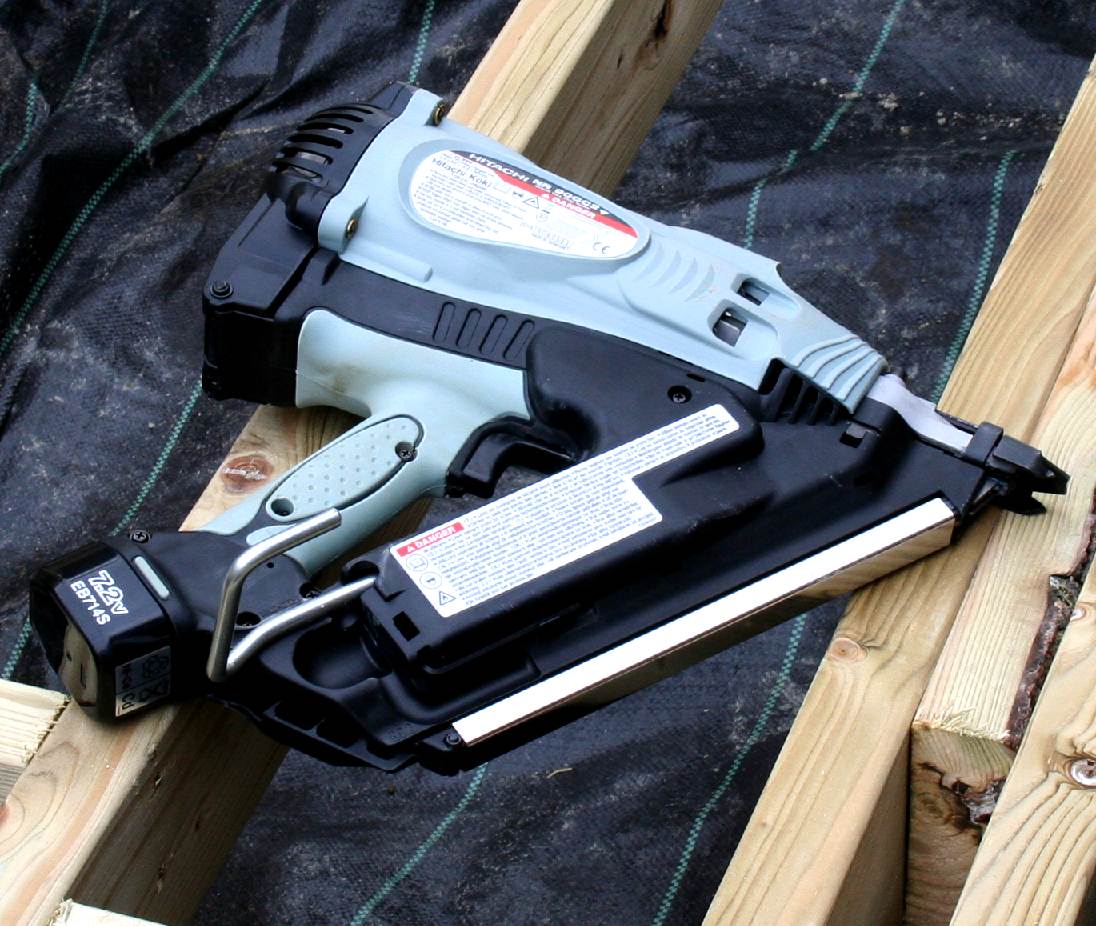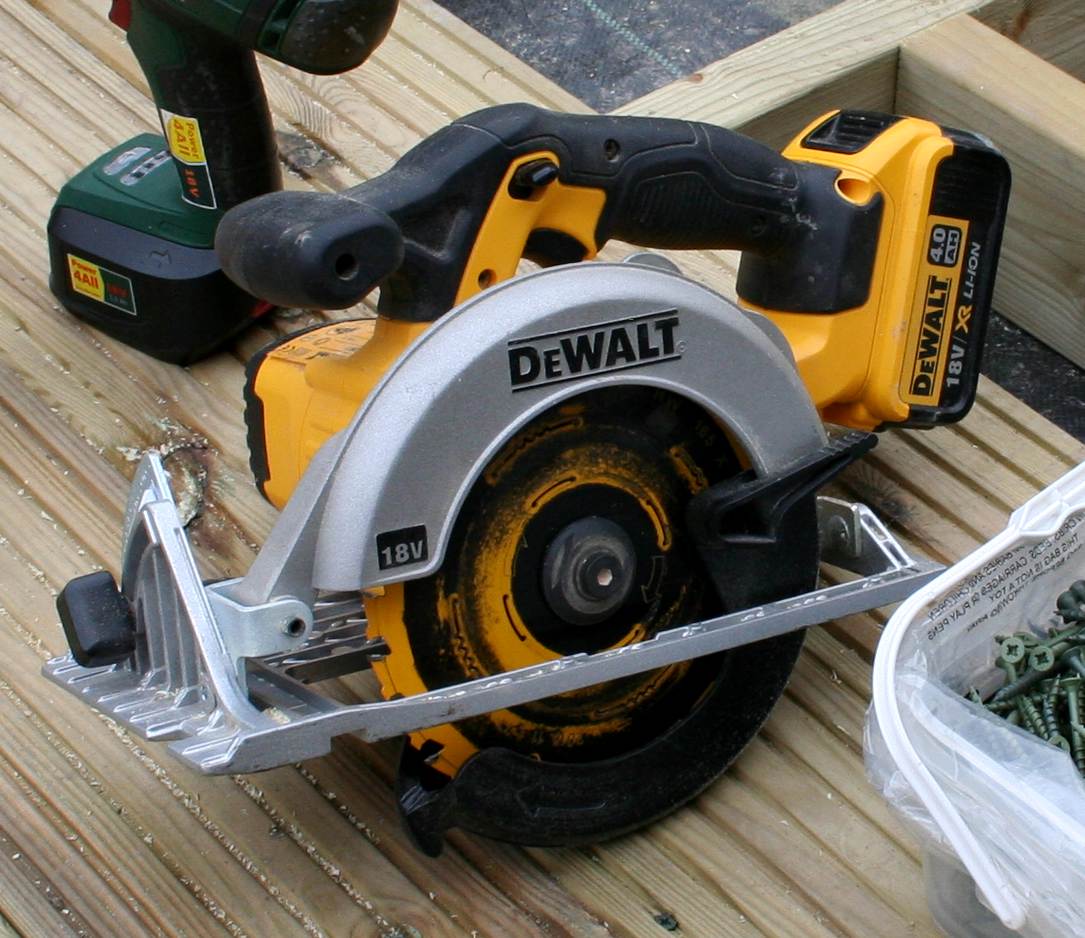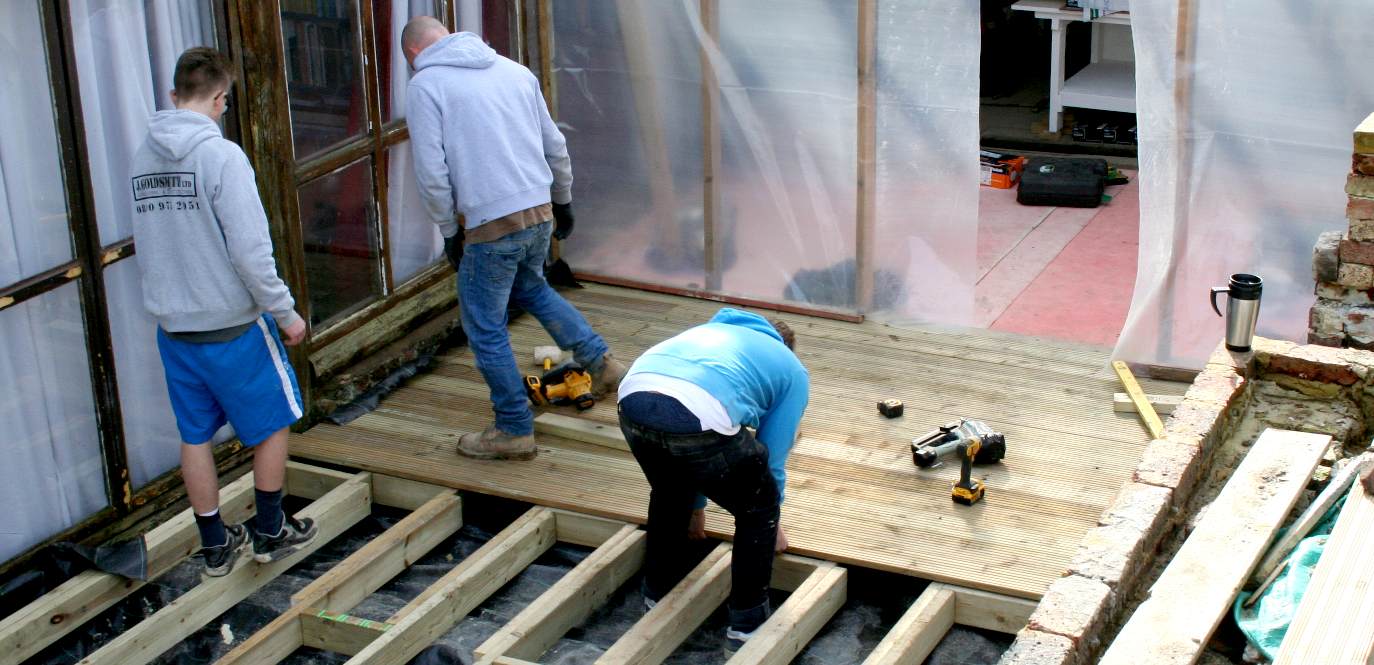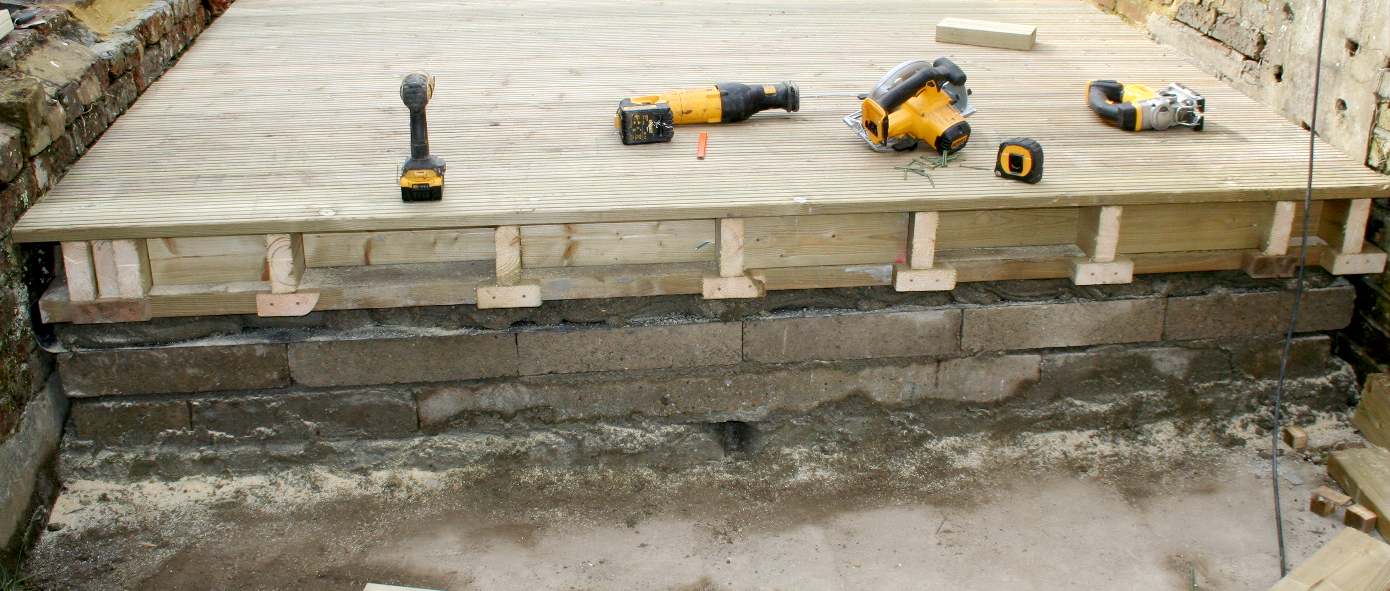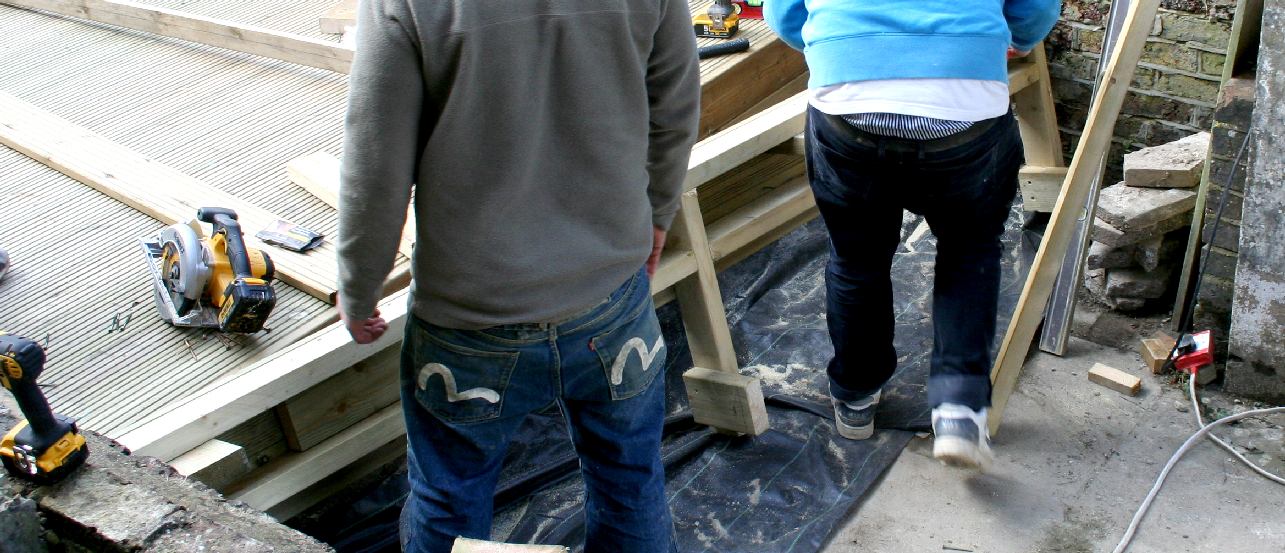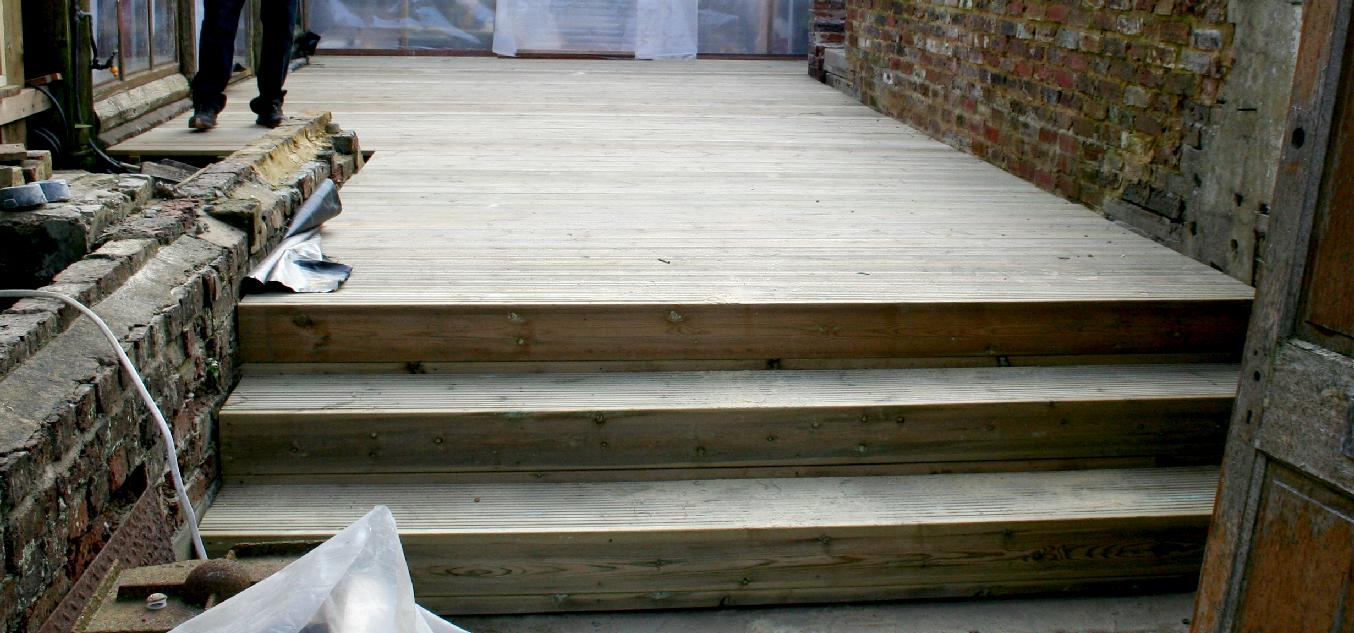|
SEAVAX - ROBOT LAB FACILITIES
BRICKS & MORTAR - CARRIAGE - DRAINAGE - FACILITIES - FILTRATION - GLASS & PAINT - GANTRY - GIMBALS - HATCHES - HYDRODYNAMICS HISTORY - INSTRUMENTS - LABORATORY - LAMINATING - LOGISTICS - OUR TEST TANK - PROOFING - REVIEWS - SCREEDING - SEAVAX TEST VIDEOS - SLUICE GATE - SOLAR BATTERIES - WAVE MAKING - WIND MACHINE
|
|
|
FLOODED - One of the most important stages when considering whether to lay decking or go for paving is the cost versus the practicality of any project. You can see from this photograph what our engineers had to endure for much of the year whenever it rained. We used three medium length timbers to get our levels and work out what was the most economical solution. Don't forget how important a spirit level is in all of this.
During the development of our robotics laboratory and water tank testing facilities we came across the occasional operational shortcoming that needed to be improved. Having built the robot lab at one end of a courtyard and the water tank at the other to take advantage of existing structures and keep costs down, we then had to struggle from a dry lab across a sometimes muddy and uneven grass section - in the wind and rain - to launch the SeaVax in the test tank. In the UK it rains quite often, putting off our scientists just a little when conditions were inclement.
PREPARATION - Having measured and marked out where to dig, shallow trenches are sunk for the footings. Copyright © March 2017, all rights reserved. You will need the permission of Bluebird Marine Systems Ltd to be able to copy, save or reproduce them, except for private study and research purposes.
DEVELOPMENT
You can see what our engineers were facing on a regular basis, but the amount of effort to put this right would have set the project back significantly, where experiments need to be run almost weekly. Fortunately, our landlord came to the rescue, paying for much of the work that was not in our budget and so beyond our means. Thank you LPHT.
DAMP PROOF COURSE - Once the concrete blocks are bedded into the liquid concrete, we laid a DPC and then a layer of cement made with sharp sand using a 4:1 ratio of four gags of sand to one bag of blue circle mastercrete with a little damp roofing admixture thrown in for good measure. Copyright © March 2017, all rights reserved. You will need permission from Bluebird Marine Systems Ltd to reproduce this photograph.
WHEELBARROWS - The timber and ballast used on this job were from Stamco in Eastbourne, our local supplier, a company that always does their very best to give us the keenest prices around. Their drivers are experts at positioning deliveries in difficult circumstances. In this case concrete and cement had to be mixed at the front of the building and hand barrowed to the rear. Please note that these photographs are Copyright © March 2017, all rights reserved. You will need the permission of Bluebird Marine Systems Ltd to be able to copy, save or reproduce them, except for private study and research purposes.
FIRINGS - We used pressure treated timbers 225 x 45mm section C24 graded planking as the wooden cap to the shallow footings. You can see in this picture the three layers that were used to make a solid base for the joists. Using firings speeds up the fixing procedure as ordinary nails can be used instead of masonry nails, or galvanized nails fired from a nail gun. Please note that this photograph is Copyright © March 2017, all rights reserved. You will need the permission of Bluebird Marine Systems Ltd to be able to copy, save or reproduce it.
JOINERY - That is the footings in place with the timber capping - all nice and level. Please note that this photograph is Copyright © March 2017, all rights reserved. You will need the permission of Bluebird Marine Systems Ltd to be able to copy, save or reproduce it.
SEAVAX DEVELOPMENT FACILITIES
With a very limited budget in 2016 we converted an old brick built outbuilding into a clean working environment to build robot parts for the SeaVax proof of concept model, clean all except for the joining courtyard. We had no choice but to with with what we had, until our landlords saw us struggling and decided to chip in, a gesture that is much appreciated. But what would the solution be: -
1. Paving slabs over multiple levels as giant steps, or
2. Raised decking to even out the undulations.
Having costed both options, decking came out as the firm favourite and gave us a flood buffer in that if the sluice gate failed, leaked or otherwise caused water problems, we would not be completely awash for very long with access to two types of drainage maintained. That would not be the case with paving.
DRAINAGE - It turned out that the drain in the left hand picture was connected to the main rainwater/soil system. We found this out by first cleaning and jet washing the glazed clay chamber when we discovered an 'S' trap. When a hose was used to keep the chamber topped up we found that water was running out at the other side of the main buildings and that that sewer system led to a private water treatment plant some half a mile away. It took a good few buckets to remove the build up of leaves that were decomposing to an oily dark substance. This is how oil is made, only deeper underground and at higher pressure. Ryan is seen here jet washing the cast iron cover that is over 100 years old. Please note that these photographs are Copyright © March 2017, all rights reserved. You will need the permission of Bluebird Marine Systems Ltd to be able to copy, save or reproduce them.
SOAK AWAY - The soak away seen in the picture on the right is much larger and deeper and carries water down into the soil gradually. It can cope with a surprising amount of liquid. Please note that these photographs are Copyright © March 2017, all rights reserved. You will need the permission of Bluebird Marine Systems Ltd to be able to copy, save or reproduce them.
LANDSCAPING - The clays and mud mix has to be shaped into a valley that will feed the ducts that passes between the concrete footings and then down to the soak away. Only then can the weed control sheeting be laid with the right contours underneath. Please note that this photograph is Copyright © March 2017, all rights reserved. You will need the permission of Bluebird Marine Systems Ltd to be able to copy, save or reproduce it.
MARKING OUT - Ryan uses a spray can of line marking paint to outline the drain so that later a section of weed control mesh can be removed to allow the drain to work. Line marking paint is available in different colours so that you can code your building works. Please note that this photograph is Copyright © March 2017, all rights reserved. You will need the permission of Bluebird Marine Systems Ltd to be able to copy, save or reproduce it.
NAILED IT - Hitachi produce this electrically triggered, gas powered nail gun that uses Paslode compatible galvanized nails. Of course Ryan is not allowed to use this machine until he is much older - but he sure wanted to give it a go. Ryan is just starting to learn how to program computers using Arduino and Raspberry Pi boards. He hopes that one day he will build robots himself and find that as enjoyable as a spot of construction. Using a nail gun speeds up production when there is a lot of repetitious nailing to do. Copyright © March 2017, all rights reserved. You will need the permission of Bluebird Marine Systems Ltd to be able to copy, save or reproduce it.
TIMBER - With most of the groundwork complete, the joists just need to be fixed and then the decking cut to size and screwed into place. At this stage traversing the courtyard is more dangerous than when it was flooded grass and mud. Copyright photograph © March 2017, all rights reserved. You will need the permission of Bluebird Marine Systems Ltd to be able to copy, save or reproduce it, except for educational use in classrooms or lectures.
PLEASE NOTE: That as and from the 1st of May 2017 we will be handing all our data and equipment over to the Cleaner Oceans Foundation and we want to do so leaving that organization with the ability to carry on where we left off and to concentrate on building the AmphiMax boat launcher and then the SeaVax ocean cleaning robot.
DeWALT - The carpenters on site seem to use a lot of DeWALT power tools. Cutting the decking to length is much easier if one person measures and the other cuts, then hands down the planks to the fitter. Copyright photograph © March 2017, all rights reserved. You will need the permission of Bluebird Marine Systems Ltd to be able to copy, save or reproduce it, except for educational use in classrooms or lectures.
MORE POWER TOOLS - [LEFT] A Hitachi nail gun that is Paslode compatible and around half the price of the most popular brand, was used to speed up nailing of the joists into position. We used 90mm Paslode galvanized nails. This is a gas powered machine that uses batteries to trigger the ignition sequence that fires the nails. Each gas cylinder shoots around 1,000 nails home. [RIGHT] This cordless circular saw is also a massive time saver and time is money - right! Copyright photograph © March 2017, all rights reserved. You will need the permission of Bluebird Marine Systems Ltd to be able to copy, save or reproduce it, except for educational use in classrooms or lectures.
BRACING - Noggins are fixed to prevent the joists twisting. This makes for a firmer floor when carrying heavy boat models from the robot lab to the test tank. Copyright photograph © March 2017, all rights reserved. You will need the permission of Bluebird Marine Systems Ltd to be able to copy, save or reproduce it, except for educational use in classrooms or lectures.
LAYING - With the joists down and fixed, the weed control barrier in place and the drainage holes cut, the decking planks can be cut and laid. These are screwed to the joists with green decking screws that are treated so as not to rust. Copyright photograph © March 2017, all rights reserved. You will need the permission of Bluebird Marine Systems Ltd to be able to copy, save or reproduce it, except for educational use in classrooms or lectures or for private study.
SPACERS - Wooden inserts are cut and fixed to the firing wall cap, onto which a frame for two steps will be mated. Copyright photograph © March 2017, all rights reserved. You will need the permission of Bluebird Marine Systems Ltd to be able to copy, save or reproduce it, except for educational use in classrooms or lectures.
DAM - The end wall is also a dam or water buffer should the water test tank empty by mistake - for example if the sluice gate is opened accidentally. During the Second World War a British engineer named Barnes Wallice invented a bouncing bomb that was designed to destroy dams in Germany. The aircraft crew from 617 squadron who delivered these special bombs in adapted Lancaster's were dubbed the Dam Busters. Copyright photograph © March 2017, all rights reserved. You will need the permission of Bluebird Marine Systems Ltd to be able to copy, save or reproduce it, except for educational use in classrooms or lectures.
FRAME - A frame was made of 5"x2" timbers as two landings, onto which decking boards were screwed. Copyright photograph © March 2017, all rights reserved. You will need the permission of Bluebird Marine Systems Ltd to be able to copy, save or reproduce it, except for educational use in classrooms or lectures.
FITTING - The cordless DeWalt circular saw came into its own for trimming operations. Copyright photograph © March 2017, all rights reserved. You will need the permission of Bluebird Marine Systems Ltd to be able to copy, save or reproduce it, except for educational use in classrooms or lectures.
RUNWAY COMPLETE - And that is it, our technicians can now get from the robotics lab to the test tank without having to trudge through the mud. Our landlord is now thinking about covering this walkway for us so that we can transfer the SeaVax models without the engineers also getting wet. Copyright photograph © March 2017, all rights reserved. You will need the permission of Bluebird Marine Systems Ltd to be able to copy, save or reproduce it, except for educational use in classrooms or lectures.
BACK TO BASICS
Almost every building on the planet is constructed on soil of some kind, the mechanics of which will vary. Some are built on rock or chalk, some on beach and many on stilts called piles so that the building appears to float above the ground, but in reality these piles allow building where otherwise the factory, house or offices would sink or subside. Subsidence can make a building unusable due to changing floor angles and cracks in a building's structure and is to be avoided at all costs, hence; building regulations came into being as a rule book for those who are not familiar with the trade and need detailed guidance.
The other main issues when choosing a site are flooding and earthquakes. In the United Kingdom earthquakes are not anticipated, though the region was once volcanic. Flooding, on the other hand, is a regular feature, with the village of Hellingly and our County town, Lewes, just a few miles west of our lab, subject to extremely damaging floods. Yet, local authorities are still allowing building on land liable to be flooded - without those buildings having any flood defenses, raised structures or floating capability. Fortunately, our robot lab is built into the side of a hill. Our laboratory is approximately 47 meters (154 feet) above sea level, and is about 8 miles from the south coast as the crow flies. That may seem safe today, but with climate change and melting the ice caps, what is a sensible height above sea level for building land?
Much
of the eastern half of Southern England is densely populated. It includes Greater London
and centres of population such as Reading, Slough,
Southampton,
Portsmouth
and
Brighton.
Most of the area is below 100 metres above sea level but the hill and
downland landscapes include large areas over 100m above sea level.
LINKS & REFERENCE
https://avaaz.org/
TEST TANK - In this diagram we are looking through the glass roof into the the SeaVax test tank from above. As we make improvements to our robotic systems in the laboratory, we can test them in water on a fully working scale model around 2.2 meters in length.
PLAN VIEW - A scale diagram showing the SeaVax laboratory (left) in relation to the test tank (right), with the void in between that was causing difficulties due to the weather, consequent mud and wind issues.
PLEASE NOTE: That as and from the 1st of May 2017 we will be handing all our data and equipment over to the Cleaner Oceans Foundation and we want to do so leaving that organization with the ability to carry on where we left off and to concentrate on building the AmphiMax boat launcher and then the SeaVax ocean cleaning robot.
BRICKS
& MORTAR - DRAINAGE
- FILTRATION
- GLASS
& PAINT - GANTRY -
HYDRODYNAMICS
HISTORY
-
INSTRUMENTS - LABORATORY - LOGISTICS
- OUR
TEST TANK - SEAVAX TEST VIDEOS
- SLUICE
GATE - WAVE MAKING -
WIND MACHINE
|
|
|
This page is Copyright © 2018 Bluebird Marine Systems Ltd. The names Bluebird™, Bluefish™, Miss Ocean™, RiverVax™, SeaNet, SeaVax™, and the blue bird & fish in flight logos are trademarks. All other trademarks are hereby acknowledged.
|
